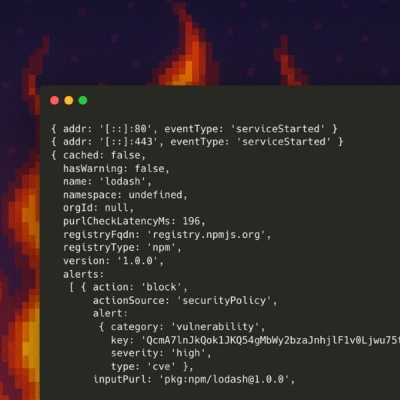
Research
/Security News
10 npm Typosquatted Packages Deploy Multi-Stage Credential Harvester
Socket researchers found 10 typosquatted npm packages that auto-run on install, show fake CAPTCHAs, fingerprint by IP, and deploy a credential stealer.
thing-it-device-browser
Advanced tools
[thing-it-node] Device Plugin for a custom Website.
1 Introdution
2 Configuration
2.1 device
2.2 instance
3 How to use it?
3.1 Navigate to URL
3.2 Authenticate device
The general purpose of the browser device is to easily manage displays.
The functionality is categorized into three parts:
a) Custom - URL
b) Template - HTML Template with placeholders
c) Kiosk – Pretty visualized information
a. Calendar
b. Dashboard
c. Events
d. Welcome
e. Wiki
In the Custom mode you are able to show a predefined URL.
The Template mode can show HTML templates, filled with placeholders in JSON format.
Kiosk mode provides you our Calendar, Dashboard, Events, Welcome
and Wiki pages.
The device configuration has two properties:
Host:
The host field is for the local host, if you are using docker fill it with the container address.
Format: 0.0.0.0:10101
External Host:
The external host field contains the address, that the display can
access.
Format: 0.0.0.0:10101
The instance configuration has six properties:
Identifier:
The identifier is the first argument in the URL to identify the instance.
URL:
The URL to be shown in Custom/Kiosk mode, leave it empty for template mode.
Template:
In this property you can fill an HTML page, with placeholders.
Examples for placeholders:
- {{firstName}}
- {{age}}
Template Markup:
In the template markup you can specify an JSON with to replace the placeholders.
Example for markups:
- { “firstName”: “Max”, “age”: 3 }
Thing-IT username/password:
This field is only for the kiosk mode! To authenticate clients for the kiosk pages, we have to generate an JWT.
The clients will not receive this information only the JWT!
The URL of the instance is in this syntax:
If you navigate to the URL you should see a six-digit token. To authenticate the client, you have to go to the Thing-IT Portal and call the instance service ‘Add one off token’ and enter as parameter the token. Now you’re client should be authenticated.
FAQs
[thing-it-node] Device Plugin to show a website
The npm package thing-it-device-browser receives a total of 7 weekly downloads. As such, thing-it-device-browser popularity was classified as not popular.
We found that thing-it-device-browser demonstrated a not healthy version release cadence and project activity because the last version was released a year ago. It has 2 open source maintainers collaborating on the project.
Did you know?

Socket for GitHub automatically highlights issues in each pull request and monitors the health of all your open source dependencies. Discover the contents of your packages and block harmful activity before you install or update your dependencies.

Research
/Security News
Socket researchers found 10 typosquatted npm packages that auto-run on install, show fake CAPTCHAs, fingerprint by IP, and deploy a credential stealer.

Product
Socket Firewall Enterprise is now available with flexible deployment, configurable policies, and expanded language support.

Security News
Open source dashboard CNAPulse tracks CVE Numbering Authorities’ publishing activity, highlighting trends and transparency across the CVE ecosystem.